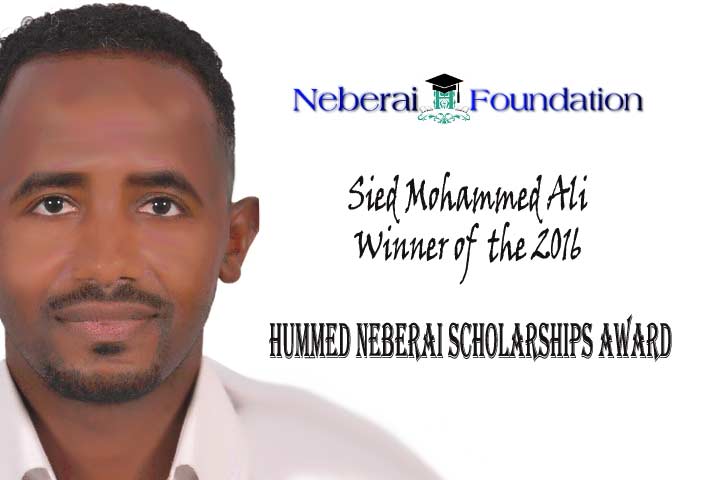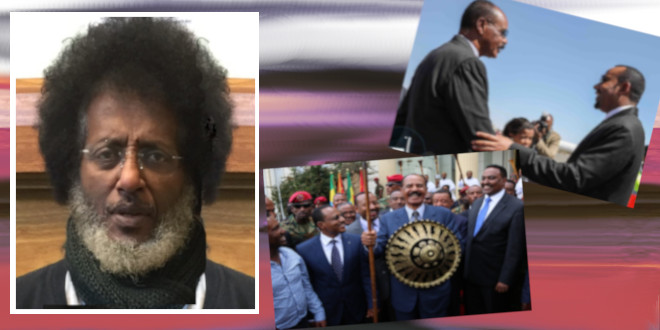Cabbages and Kings and Why the Sea is Boiling Hot – VII
“The time has come,” the Walrus said – “To talk of many things:
Of shoes and ships and sealing wax – Of cabbages and kings
And why the sea is boiling hot – And whether pigs have wings”
Through the Looking Glass by Lewis Carroll
A few of my readers had expressed they were looking forward for a continuation of the previous response to comments, particularly on the Land issue. I am afraid I am going to disappoint them because my attention was diverted by serious comments on the previous piece. It is so important that I have decided to devote this part to that subject.
It concerns comments by two serious compatriots who challenged the passing remark I made on the Federation in discussing religion. The onus of the question was: Was the Federation imposed on Eritrea? I was taken aback and was forced to review my readings on the subject. I even called a venerable Eritrean who had written a book on the subject.
My findings are summarized in the following extract from the Encyclopedia Britannica.
Adoption of the federal scheme
In 1950 the United Nations (UN), under the prompting of the United States, resolved to join Eritrea to Ethiopia within two years. The proposed federation would provide Eritrea with autonomy under its own constitution and elected government. Elections to a new Eritrean Assembly in 1952 gave the Unionist Party the largest number of seats but not a majority; the party thus formed a government in coalition with a Muslim faction. The Eritrean constitution, prepared by the UN in consultation with Emperor Haile Selassie I of Ethiopia, was adopted by the Eritrean Assembly on July 10, 1952, and ratified by Haile Selassie on August 11. The act of federation was ratified by the emperor on September 11, and British authorities officially relinquished control on September 15. [Underline is mine]
Failure of the federal scheme
The federal scheme was short-lived, mainly because the imperial government in Addis Ababa was unwilling to abide by its provisions. First, the Eritrean constitution sought to establish an equilibrium between ethnic and religious groups. It made Tigrinya and Arabic the official languages of Eritrea, and it allowed local communities to choose the language of education for their children. In the spirit of the constitution, it became a practice to ensure parity between Christians and Muslims in appointment to state office. This delicate balance was destroyed by Ethiopian interference, and Muslims were the initial losers, as Arabic was eliminated from state education and Muslims were squeezed out of public employment.
The UN Encyclopedia of Nations gives a bit more detail. Far more coverage is given by Lionel Cliffe and Basil Davidson on their book on the subject[1][1]. I think the facts as confirmed by independent sources speak for themselves. (Eritrean sources are apt to be taken as prejudiced.)
But surely I must have missed something, because the ensuing interaction with my observers was not as conclusive as I would have liked. On further thought I discovered I had missed out the turbulence, the passions of the times, and the spirit of honorable compromise that led brotherhood and peace to triumph in the end—that bitter-sweet moment in our history which Alemseged Tesfay has aptly sanctified by giving the title of “Aynefelalle” (Let’s Not Part) to his account of the real life drama of the era.
The various UN missions to Eritrea did not bring the Federation and the constitution out of the blue. It was a synthesis of painstaking consultations with different groups, parties, and community elders, amid disruptions fomented from within and from without. The most prominent stumbling block on resolving the Eritrean issue was the confrontation between Christians and Muslims. The Muslims, particularly those from the Western Lowlands, had the option to withdraw from the making of Eritrea and join the Sudan where they had not only cultural but kinship affinity as well. The Four Powers initially delegated by the UN to deal with former Italian colonies had each come out with its own recommendations. Great Britain’s proposal was to split Eritrea into two: the Highlands and the coastal areas be annexed to Ethiopia while the Western Lowlands be ceded to its then colony of the Sudan. And Britain being the caretaker government had all the necessary leverages in place to abet the cleft and did not hesitate to use it. Although the Muslims were for full-fledged independence they had no desire at all to break-up Eritrea. They rather opted to accept the Federation with one primary condition: that Arabic is adopted as the national language along with Tigrinya. Emperor Haileselassie is also reported to have intervened and persuaded the Unionists to accept that condition, evidently calculating the risks to his own interest objectively. The choice of Tigrinya and Arabic was therefore in essence a home brewed proposal—that of the Christians and Muslims who conducted the negotiations.
That Arabic be one of the two official languages was hence a matter of “gentlemen’s agreement” – a qal kidan entered into by our fathers. If we the present Christians are negating that commitment and persist on denying the single important claim our Muslim brothers are making so passionately, our fathers must be turning in their graves and it shall be the greatest perfidy of our generation. It will be an irresponsible rupture of the sacred bond that was painfully crafted as the result of centuries of harmonious coexistence and for which blood has flowed from both communities in pursuit of reclaiming Eritrea, intact with its diversity.
It is appropriate at this instance to take up the irresponsible way the words “Jihadist”, “Taliban” and “Arab terrorist” are thrown about in discussing the question of the Arabic language. First of all, no one except the Kunama can deny he has Arab strains in his blood. If he does, he better read his history and research his genealogy[2][2]. Secondly, if one is to abide by race profiling Christianity itself has had its heydays of bigotry in history. The most famous of these was the state/church sponsored Spanish Inquisition which coerced Jews and Muslims into conversion at the pain of death. Even Protestants were not spared of persecution. Goggle has amassed a library of over a million images of Inquisition bigotry, torture machinery, and practices—a period of horror never surpassed in previous history.
The inhuman campaign against “heresy” was rampant all over Europe in those days. The institution is still maintained at the Vatican under the new name of Congregation for the Doctrine of the Faith although its jurisdiction is limited to the Catholic World. A parallel bigotry with the English Church led to the emigration of the Pilgrim Fathers to seek refuge in the New World of America. The Papacy was at the center of the Hundred Years War in Europe, while the Thirty Years War conducted in Germany was primarily between Catholics and Protestants. The story of brutality conducted in the name of Christianity is endless and our region is not the exception. It continues to be carried out by zealots and extremists in one form or the other. It is true that conquests and brutalities have also been carried out in the name of Islam. There again individuals and groups of Muslims have recently committed atrocities and continue their campaign to rid this world of provocative infidels, not to mention the strife among the different sects within the faith.
President Bush declared War on Terrorism, before even defining what terrorism meant. The result is thousands of American citizens dead in the line of duty and trillions of dollars wasted, and America is now seeking an honorable way out from the fiasco. How different could it have been if a small percent of the defense expense was directed to war on “the causes of terrorism”? America, all the members of the UN in general, have all the leverage and the clout to bring all religious leaders to come together and resolve to take it as a major challenge to narrow their differences and incorporate in their teachings regular promotion of harmonious coexistence. Extensive programs could have been carried out to bring together the elites of the different faiths to deliberate on the same theme and the media redirected to devote part of their programs in the same effort. And at the bottom of it all is the wide gap between the haves and the have-nots in this world which could have been better addressed and remedied with a small portion of the vast resource that is being allocated to the war machinery by all governments large and small.
Unfortunately the story of man has it that it is the cabbages that are dragged and expended in all wars while the kings live it up. Eritrea is a case study in which the question of official languages is purposely left in limbo to foment strife among its people who have lived together for centuries and fought together to make Eritrea a reality. Come on, let us not bring these hackneyed words and play into the hands of PFDJ, and inadvertently create a fertile ground to bring Eritrea to the attention of the real Jihadists.
Let us conclude this protracted argument and resolve Arabic as an official language on equal footing with Tigrinya and build on the harmony brought about by our fathers on the eve of the Federation: Aynfelalle. Thank you Alemseged for that.
[1] Lionel Cliffe, Basil Davidson, The Long Struggle of Eritrea for Independence and Constructive Peace, page 22 onwards on the pdf text.
[2] I am fortunate to learn I am the 38th in a filial line originating with a certain Ona OmAd. He is followed with personalities with strange sounding names until the 8th who happens to be Mohammed who in turn is succeeded by Abdella and Omer Zenguae. I can’t figure out what the next three are from their names but all the remaining are certainly Christians. My father, a Highlander, used to say we originated in Anseba. If there is any other descendant of Ona OmAd please come forward and let’s rebuild our ancestry. I have other interesting stories in this respect, particularly those with a mixed lineage; I am willing to share them with those interested.



Awate Forum